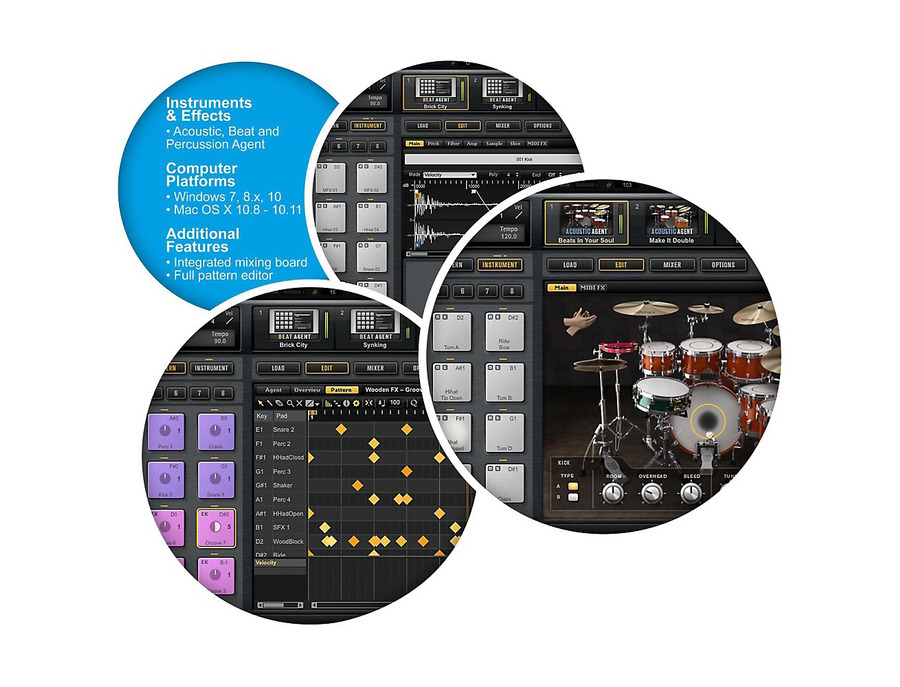
Negative values shift the timing backward, and the notes are played earlier. Swing FactorĪllows you to shift the timing of notes on even numbered beats to give the pattern a swing feeling. You can use Groove Agent independently from a host application.įlams and rolls are not affected by this parameter.
#GROOVE AGENT PATTERN EDITOR FULL#
In the Pattern editor, you can create and edit MIDI drum patterns.īeat Agent is a full beat production instrument with all the tools and sounds to create amazing beats for any electronic or urban music genre.Īcoustic Agent is a next-generation virtual acoustic drummer that offers first-class drum sounds and an integrated player that creates the perfect accompaniment for your songs. The columns correspond to the kits in the kit rack. The Overview page shows which patterns and styles are assigned to the pattern pads of the loaded kits. For example, you can switch from an intro to a verse, or from a fill back to the previous verse, or even automatically stop playback. Jam Mode allows you to automatically switch between pattern pads during playback. To display the pad settings below the MIDI Player or the Style Player, activate Show Pad Settings at the top right of the Agent page. Each substyle plays a typical rhythm pattern with a specified percussion instrument. The Style Player allows you to combine up to eight instrument substyles. This allows you to edit this part in the Pattern editor, for example. You can convert the selected part of a style to a MIDI pattern. Converting Intros, Main Patterns, Fills, or Endings into MIDI Patterns.The Style Player allows you to load one of the included styles and make playback settings for it. The MIDI Player allows you to load your own MIDI files or one of the included MIDI patterns and set up playback for them. With the two buttons at the top, you can select whether you want to use the MIDI Player or the Style Player. The Agent page allows you to select and set up the patterns or styles that are played by the pattern pads. This allows you to quickly restore and reuse particular patterns and settings. You can save the 16 pads of a group with their patterns and settings as a pattern group. You can copy or move pattern pads with all their settings to other pattern pads of the same or a different pattern group. Locking the pad settings is useful if Global mode is activated for the pattern pads and you want to keep the current pad settings for one kit slot, for example. You can use the pattern pads in Groove Agent individually for each kit or globally for all kits. The context menu contains functions and settings for the pattern pads. You can assign several MIDI patterns or styles to multiple consecutive pads at the same time. You can assign MIDI patterns or styles to pads from various locations, by double-clicking, by using drag and drop or via the Load dialogs. Assigning MIDI Patterns or Styles to Pads.

Pattern pads trigger MIDI drum patterns or styles.

Instrument pads are used to trigger samples. In this case, you have two options: You can set up a different MIDI port or a different MIDI channel for the pattern pads.

If instrument and pattern pads are both assigned and share the same trigger note, the pattern pad always gets priority, therefore, instrument pads that use the same trigger note as a pattern pad cannot be played via the same MIDI port.

#GROOVE AGENT PATTERN EDITOR HOW TO#
The following sections describe how to load, save, and manage the different kinds of sound files in Groove Agent. These sections help you to get started with Groove Agent and introduce program functions and settings.


 0 kommentar(er)
0 kommentar(er)
